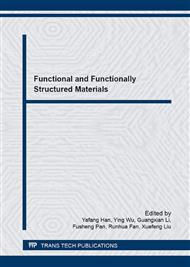[1]
I. Mavranezouli, The cost-effectiveness of long-acting reversible contraceptive methods in the UK: analysis based on a decision-analytic model developed for a National Institute for Health and Clinical Excellence (NICE) clinical practice guideline, Hum Reprod, 23(2008).
DOI: 10.1093/humrep/den091
Google Scholar
[2]
P. D. Blumenthal, A. Voedisch, K. Gemzell-Danielsson, Strategies to prevent unintended pregnancy: increasing use of long-acting reversible contraception, Hum Reprod Update, 17(2010) 121-137.
DOI: 10.1093/humupd/dmq026
Google Scholar
[3]
T. von Werne, T. E. Patten, Preparation of structurally well defined polymer–nanoparticle hybrids with controlled/living radical polymerization , Journal of the American Chemistry Society , 121(1999) 7409–7410.
DOI: 10.1021/ja991108l
Google Scholar
[4]
M. Thiery, Intrauterine contraception: from silver ring to intrauterine contraceptive implant, European Journal of Obstetrics & Gynecology & Reproductive Biology, 90(2000) 145-152.
DOI: 10.1016/s0301-2115(00)00262-1
Google Scholar
[5]
F. Zielske , J. U. Koch , R. Badura , et al , Studies on copper release from copper-T devices (T-CU 200) and its influence on sperm migration in vitrok, Contraception , 10(1975) 651-666.
DOI: 10.1016/0010-7824(74)90104-8
Google Scholar
[6]
J. A. Zipper , H. J. Tatum, L. Pastene , et al , Metallic copper as a intrauterine contraceptive adjunct to T, device , American Journal of Obstetrics & Gynecology , 1970 , 105.
DOI: 10.1016/0002-9378(69)90302-0
Google Scholar
[7]
Y. Liu , A. Thesis Submitted in Partial Fulfillment of the Requirements for the Degree of Master of Engineering , Huazhong University of Science and Technology , 2011.
Google Scholar
[8]
W. Zhang , X. Xia , C. Qi , C. Xie, S. Cai, A porous Cu/LDPE composite for copper-containing intrauterine contraceptive devices , Acta Biomater , 8(2012) 897-903.
DOI: 10.1016/j.actbio.2011.09.024
Google Scholar
[9]
E. Fulcher, N. R. Elisa Di Capua, Pregnancy despite IUD: adverse effect on pregnancy evolution and fetus, (2003).
DOI: 10.1016/s0010-7824(03)00074-x
Google Scholar
[10]
L. Xiao, Control of pore structure in copper/low density polyethylene porous composites, Huazhong University of Science and Technology, (2013).
Google Scholar
[11]
T. Xu, H. Lei, S. Z. Cai, X. P. Xia, C. S. Xie, The release of cupric ion in simulated uterine: New material nano-Cu/low-density polyethylene used for intrauterine devices, Contraception, 70(2004) 153-157.
DOI: 10.1016/j.contraception.2004.02.018
Google Scholar


